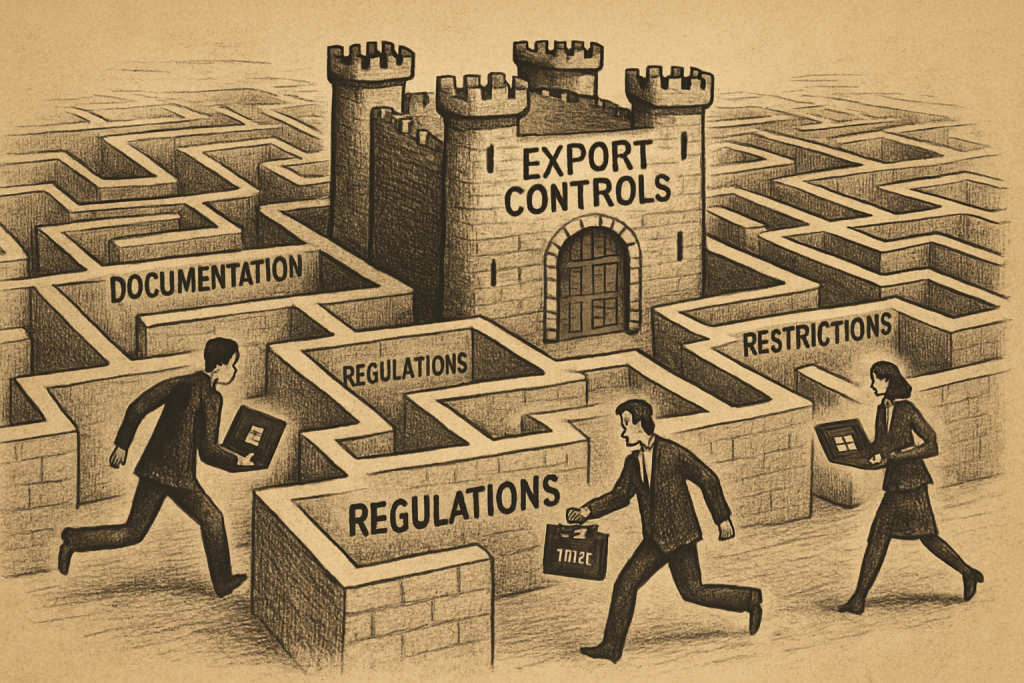Hold on to your hats, tech enthusiasts, because the regulatory landscape just got a whole lot bumpier for AI companies. Uncle Sam, in the form of the U.S. Commerce Department’s Bureau of Industry and Security (BIS), dropped a bombshell on October 3, 2025: the “50% rule.” And trust me, this isn’t your grandma’s bake sale rule. This is serious business, folks. Think of it as the digital equivalent of building a wall- around certain technologies, that is.
So, what exactly is this “50% rule”? In a nutshell, it’s an export control regulation that extends licensing restrictions to subsidiaries that are more than 50% owned by entities already on U.S. export control and sanctions lists. We’re talking about companies that the U.S. government considers, shall we say, not exactly friendly. The primary target? U.S. tech partnerships with companies in China and other nations deemed national security threats. It’s like that scene in “Mission: Impossible” where they have to navigate a laser grid, except instead of Tom Cruise, it’s AI companies trying to navigate a bureaucratic maze.
To understand the impact, we need a little context. This isn’t some random, out-of-the-blue decision. The “50% rule” is the latest move in a long game of chess, a broader strategy designed to prevent sensitive U.S. technologies from falling into the wrong hands. Think of it as digital Fort Knox. The idea is to close loopholes. Previously, restricted entities could indirectly benefit from U.S. technologies through their affiliates. This new rule slams that door shut, aiming to ensure that if you’re on the naughty list, your subsidiaries are too.
Now, let’s talk about who gets hit hardest: AI companies. Why them? Well, AI is inherently global. These firms often operate across borders, collaborating with international partners to access talent, data, and markets. This regulation throws a wrench into those gears. It imposes stringent compliance requirements, potentially hindering innovation and slowing down business operations. It’s like trying to run a marathon with ankle weights. Sure, you can do it, but it’s going to be a lot tougher. One company, Anthropic, has already adopted similar policies, suggesting they saw this coming down the pipeline. Smart move.
The reaction to the “50% rule” is, unsurprisingly, mixed. National security hawks are cheering, seeing it as a vital measure to protect U.S. technological dominance. They argue it’s a necessary evil to keep our competitive edge. But others are less thrilled. Critics contend that the rule could be overly burdensome, especially for AI firms that are trying to scale at warp speed. It could stifle innovation and make it harder for U.S. companies to compete globally. It’s a classic case of security versus progress, a debate as old as technology itself.
This rule aligns with export control initiatives from previous administrations, but it dials up the intensity. It’s like taking a dial from 8 to 11. The stricter compliance requirements could have a significant impact on the pace of innovation in the AI sector. We might see companies become more cautious about international partnerships, or even reconsider their global strategies altogether. It’s a brave new world, and companies are going to have to adapt.
Beyond the immediate impact on AI companies, the “50% rule” raises some broader questions. What is the long-term impact on international collaboration in AI research and development? Will it lead to a balkanization of the AI landscape, with different regions developing their own separate ecosystems? Will it inadvertently push innovation to other countries, weakening the U.S.’s competitive advantage in the long run? These are all questions that policymakers and industry leaders need to grapple with.
And let’s not forget the ethical considerations. Is it fair to restrict access to technologies that could potentially benefit humanity as a whole? Where do we draw the line between protecting national security and promoting global progress? These are complex questions with no easy answers. It’s like the trolley problem, but with algorithms instead of people.
Financially, the “50% rule” could have significant repercussions. Companies that are heavily reliant on international partnerships may see their valuations take a hit. Investors may become more wary of AI firms with significant exposure to restricted countries. We might even see a shift in investment patterns, with more capital flowing to companies that are perceived as being less risky from a regulatory perspective. It’s a high-stakes game, and the rules are changing.
In conclusion, the U.S. Commerce Department’s “50% rule” is a game-changer for the AI industry. It’s a bold move that aims to protect U.S. technological interests, but it also carries significant risks. It will be fascinating to see how companies adapt to this new reality, and what the long-term consequences will be for the future of AI.
Discover more from Just Buzz
Subscribe to get the latest posts sent to your email.

